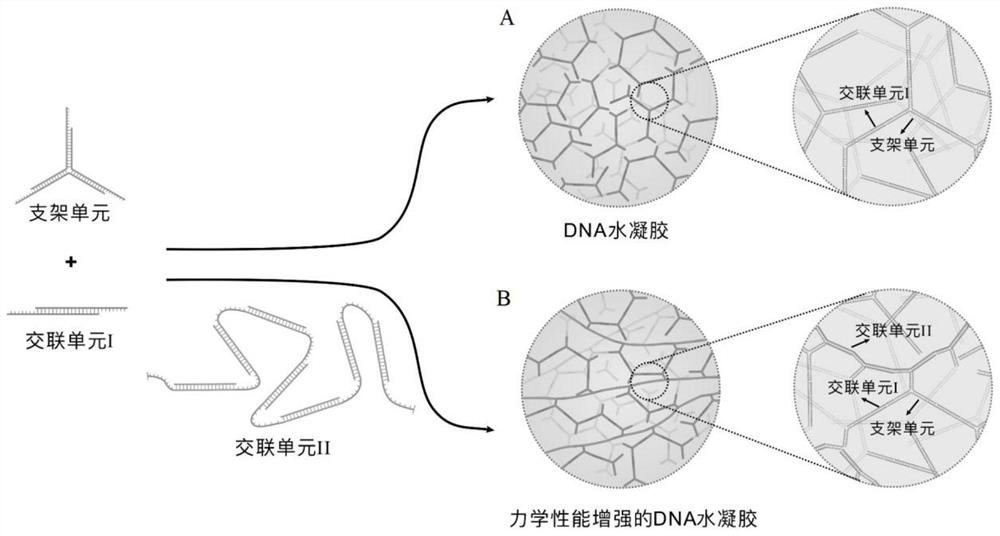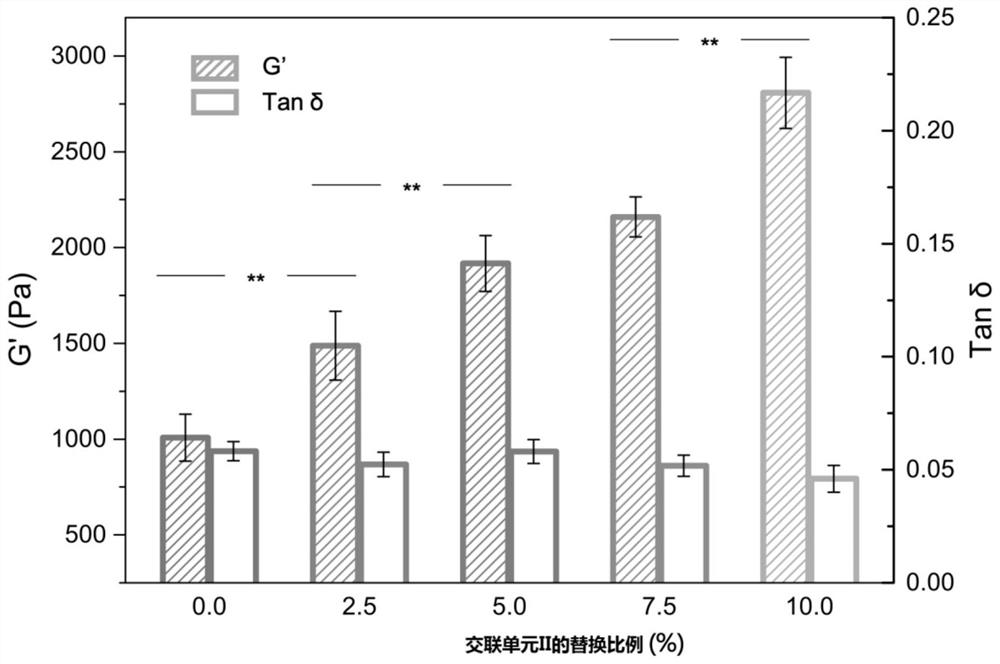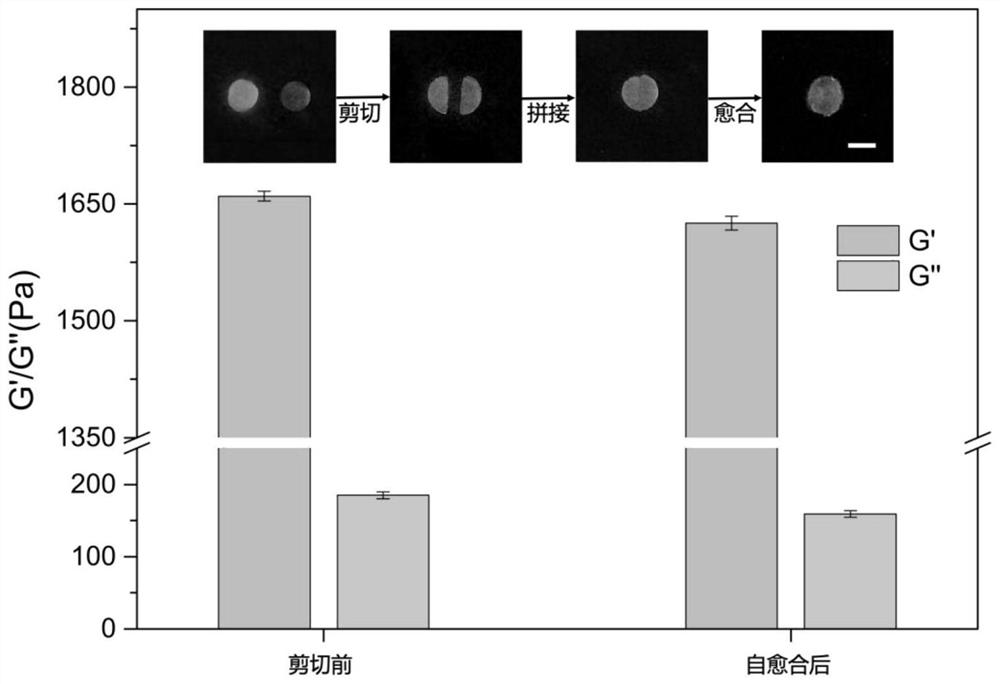Nucleic acid hydrogel with improved mechanical properties as well as preparation method and application thereof
A hydrogel and nucleic acid technology, applied in the field of polymer materials and biology, can solve the problems of changing the hydrogel network cross-linking structure and cross-linking density, topology, mesh distribution and permeability properties are no longer retained, etc. The effect of improving mechanical strength and stability and good biocompatibility
- Summary
- Abstract
- Description
- Claims
- Application Information
AI Technical Summary
Problems solved by technology
Method used
Image
Examples
preparation example Construction
[0116] The second aspect of the present disclosure provides the preparation method of the nucleic acid hydrogel according to the first aspect of the present disclosure, the step of cross-linking the scaffold unit with the cross-linking unit I and the cross-linking unit II.
[0117] In some embodiments, the preparation method of nucleic acid hydrogel comprises the following steps:
[0118] preparing scaffold units in the gel matrix to obtain a scaffold unit solution;
[0119] preparing crosslinking unit I and crosslinking unit II in the gel matrix to obtain a crosslinking unit solution;
[0120] The scaffold unit solution is mixed with the crosslink unit solution, and the scaffold unit self-assembles with crosslink unit I and crosslink unit II to obtain a nucleic acid hydrogel.
[0121]
[0122] In some embodiments, the scaffold core in the scaffold unit is nucleic acid, and the scaffold unit can be prepared by complementary pairing of nucleic acid fragments. Exemplarily, t...
Embodiment 1
[0176] Example 1 Preparation of nucleic acid hydrogels
[0177] Step 1, use the rolling circle amplification reaction to prepare long strands of single-stranded DNA, as follows:
[0178] Mix 350 pmol of linear template strand, 10 μL of 10× ssDNA / RNA circular ligase reaction buffer, 3 μL of ssDNA / RNA circular ligase, 5 μL of 50 mM MnCl 2 Mix well, and add an appropriate amount of high-purity water to a total volume of 100 μL. Incubate at 60°C for 6h for circularization reaction, then react at 80°C for 10min to inactivate the ligase, and place at room temperature for 10min to cool down to room temperature to obtain circular template DNA.
[0179] Add 5 μL exonuclease I and 2.5 μL exonuclease III to the above system. React at 37°C for 30min to digest the uncyclized linear template strand, then inactivate at 90°C for 5min, and cool at room temperature for 10min. After the reaction product was subjected to 20% acrylamide / 8M urea denaturing gel electrophoresis, the situation ...
Embodiment 2
[0187] Example 2 Preparation of nucleic acid hydrogels
[0188] The nucleic acid hydrogel was prepared by the method shown in Step 1-Step 4 in Example 1, wherein the preparation of the cross-linking unit solution in Step 3 was as follows:
[0189] Take 28.50nmol of L1 and L2 each, mix the single-stranded DNA solution containing 3.0nmol of the long chain of the repeat sequence and 3.0nmol of the complementary strand and freeze-dry to obtain a cross-link with a molar content of repeat fragments in the cross-link unit II of 5.0%. unit solution.
PUM
 Login to View More
Login to View More Abstract
Description
Claims
Application Information
 Login to View More
Login to View More - R&D
- Intellectual Property
- Life Sciences
- Materials
- Tech Scout
- Unparalleled Data Quality
- Higher Quality Content
- 60% Fewer Hallucinations
Browse by: Latest US Patents, China's latest patents, Technical Efficacy Thesaurus, Application Domain, Technology Topic, Popular Technical Reports.
© 2025 PatSnap. All rights reserved.Legal|Privacy policy|Modern Slavery Act Transparency Statement|Sitemap|About US| Contact US: help@patsnap.com



